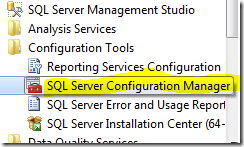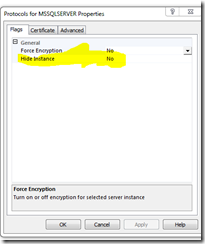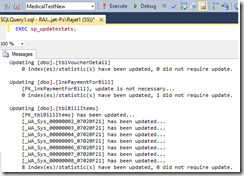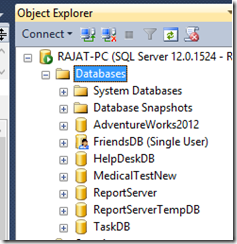To make your SQL server secure one of the option is to hide the instance from network.
To achieve this you need to do following things
1) Go to Configuration tool folder and select configuration manager of SQL server as shown in below fig
2) Once Configuration manager is open select SQL Server Network configuration option. In this you will find the option protocols for MS SQL Server as shown in fig
3) Now select property of protocol of MSSQLSERVER. You will get below screen now in this screen you are seeing there is a property called hide instance by default it is false. make it true to hide instance from network.
I hope this article will help you to make your sql server instance hide from book,
Thanks
Rajat Jaiswal






